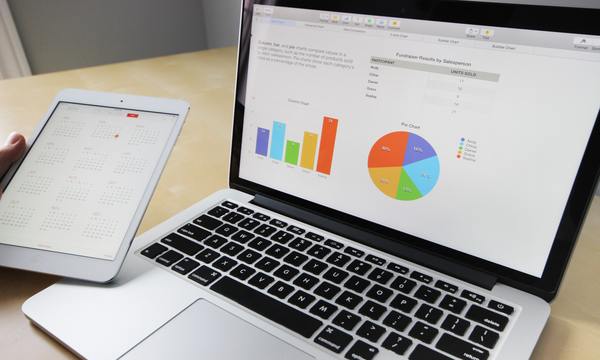Business Analytics
Introduction
We are living in a competitive world where everyone has to perform better than others. In business scenarios, an organization has to increase sales trend, enhances productivity, gain revenues and understand the insight of business models. Since we are living in a data-driven environment, business analytics helps to understand the customers’ perspective and predict future sales. It collects data from the database and analyzes to gain useful information to improve business. It helps businesses to remain competitive.

What is Business Analytics?
Business analytics is a method of applying statistical techniques combined with applied mathematics and computers science to improve decision making strategy in business scenarios. With the application of business analytics – we could improve in HR planning, sales strategies, policy making, financial activities, product pricing and so forth.
Commonly used analytics methods in Business Analytics
- Descriptive Analytics – It is a method to analyze data that helps to describe, show or summary data of past and present forms. It consists of measures of central tendency and measures of dispersion. Measures of central tendency (mean, median & mode) represent the entire set of data with one representative value. Also known as the central value. Measures of dispersion (variance, standard deviation & range) give the spread of data [variability]. It helps to identify the problem in the data.
- Predictive Analytics – It is a method to analyze data for determining patterns and make a prediction about the likelihood of future outcomes by using historical data (forecasting). It uses methods like data mining, statistical modelling and machine learning for forecasting data.
- Prescriptive Analytics – Now coming to Prescriptive analytics, let’s have a short look at descriptive and predictive analytics. Descriptive analytics gives the overview of “What has happened?” and while predictive analytics gives the prediction of “What will happen?” Prescriptive analytics gives the best optimal solution from the alternatives for stronger business performance. Basically, it is an implementation of a certain plan based on the results of descriptive and predictive analytics (decision support).

Some popular statistical methods used in Business Analytics
- Sampling – It is a process of taking a small set of observations (sample) from a large population. It is a common tool used in any type of data analysis. Some of the sampling methods are random sampling, stratified sampling and cluster sampling. Sometime due to time constraints or it could be similarities in data – we could not analysis the whole data. So in such circumstance, we can go for sampling.
- Correlation Analysis – It is used to study the closeness of the relationship between two or more variables i.e. the degree to which the variables are associated with each other. Suppose in a manufacturing firm, they want the relation between –
- Demand & supply of commodities.
- Production volume & the efficiency of machinery equipment.
- Regression Analysis – It is a commendable statistical technique used in business analytics. It helps to predict the value of future outcomes by using the past data. This method helps in forecasting the data and Time-series Analysis. The different types of regression analysis are
- Linear Regression
- Multiple Regression
- Logistic Regression
- Poisson Regression…
- Graphical Analysis – Here, the data are presented in the form of graphs or diagrams. When we presented data through diagrams and graphs – it looks more convincing & appealing. Thus provide the meaningful outlook of a data. Some of the popular graphical tools used are
- Histogram
- Bar chart
- Pareto chart
- Scatter plot…
What role does Statistics play in Business Analytics?
Statistics is the foundation of business analytics. Since we now that business analytics is a combination of computer science and statistics. There are various statistical methods which are the foundation of business analytics methods like sampling, hypothesis testing, correlation, regression and so forth. For the applications of these techniques, one should have a basic knowledge about it – “What are these methods mean?” and “Where and when we can apply?” Hence statistics plays a pivotal role in it.
Attend our Training Program, to know more about Statistics and Business Analytics Software (Minitab). We conduct various training programs – Statistical Training and Minitab Software Training. Some of the Statistical training certified courses are Predictive Analytics Masterclass, Essential Statistics For Business Analytics, SPC Masterclass, DOE Masterclass, etc. (Basic to Advanced Level). Some of the Minitab software training certified courses are Minitab Essentials, Statistical Tools for Pharmaceuticals, Statistical Quality Analysis & Factorial Designs, etc. (Basic to Advanced Level).
We also provide a wide range of Analytics Solutions like Business Analytics, Digital Process Automation, Enterprise Information Management, Enterprise Decisions Management and Business Consulting Services for Organisations to enhance their decision support systems.